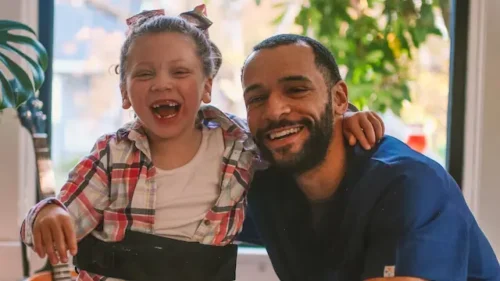
Six Tips on Caring for a Child with Cerebral Palsy
Cerebral Palsy is a neurological condition that affects muscle tone and movement. It most commonly occurs due to brain damage sustained during prenatal development, birth, or early childhood. Understanding Cerebral Palsy is essential for providing the best care and support for a child with this condition. It is important to know that each case of cerebral Palsy is unique, and symptoms can range from mild to severe. Children with cerebral Palsy may have difficulty with movements such as walking, crawling, or reaching, as well as challenges with muscle coordination, speech, and fine motor skills. However, with the right care, support, and therapy, children with cerebral Palsy can lead fulfilling lives and reach their full potential.
How to Care for a Cerebral Palsy Child
Caring for a child with cerebral Palsy requires patience, understanding, and commitment. It is a challenging and persevering journey. Still, the right approach can make it a truly rewarding experience.
1. Staying Informed and Connected with Resources and Support
Staying informed and connected with resources and support is crucial for families and caregivers of children with cerebral Palsy. A great place to start is by seeking information from credible sources, such as the Cerebral Palsy Guide or local support groups. Connecting with other families in similar situations can provide a sense of community and offer practical tips and advice. It’s important to stay up-to-date with the latest advancements in treatment and therapy options and government and insurance policies that may affect the child’s care.
Resources like rehabilitation centers, schools that specialize in serving children with functional needs, and financial assistance programs can also be beneficial. By staying informed and connected, families and caregivers can ensure they have access to the support and resources to provide the best care possible for their child with cerebral Palsy.
2. Creating a Supportive Environment
Creating a supportive environment for a child with cerebral Palsy is crucial in helping them thrive. It starts with making modifications to the home, such as installing grab bars, ramp access, and ensuring doorways are wide enough for wheelchairs. It is important to have open communication with family, friends, and caregivers to ensure everyone is on the same page and working together to support the child.
A positive and encouraging attitude towards the child’s abilities can go a long way in building their confidence and self-esteem. Encouraging the child to participate in community activities and events can also foster a sense of belonging and increase their exposure to new experiences. A supportive environment can make a big difference in the quality of life for a child with Cerebral Palsy.
3. Building a Daily Care Routine
Building a daily care routine for a child with cerebral Palsy is important for promoting their overall health and well-being. It includes regular physical therapy to improve muscle strength and mobility. And regular occupational therapy to improve fine motor skills and independence in daily activities. It is also important to ensure the child eats a well-balanced diet, gets enough sleep, and stays hydrated. Incorporating playtime, educational activities, and leisure pursuits into the routine can help the child build confidence, social skills, and a sense of purpose.
Consistency and structure in the daily care routine provide a sense of security and stability for the child. Working with healthcare providers and other support systems makes it possible to build a daily care routine that promotes the best outcomes for a child with Cerebral Palsy.
4. Supporting Emotional and Mental Well-being
A child with cerebral Palsy can grow into a well-rounded and self-assured individual by fostering independence and confidence. It requires emotional and mental well-being. Supporting emotional and mental well-being in a child with cerebral Palsy is just as important as physical care. Children with cerebral Palsy may experience feelings of frustration or low self-esteem, which is why providing a supportive and understanding environment is important. Encouraging open communication and active listening can help the child feel heard and validated. Providing opportunities for the child to engage in activities they enjoy and pursue hobbies or interests can also boost their mood and self-esteem.
Regular counseling or therapy can also be beneficial for managing emotions and building resilience. Involving the child in decision-making and goal-setting can help build their confidence and self-determination. By addressing the child’s emotional and mental well-being, families and caregivers can help ensure the child has a positive outlook and a healthy state of mind.
5. Balancing Caregiving and Self-Care
Balancing caregiving and self-care is important for the long-term well-being of those who care for a child with Cerebral Palsy. It’s important to set boundaries and prioritize self-care activities, such as exercise, spending time with loved ones, and doing things that bring joy. Seeking support from friends, family, or support groups can also provide a much-needed break and help prevent burnout. Utilizing respite care services, where a trained caregiver provides temporary relief to the primary caregiver, can also be beneficial. Planning and delegating tasks can help manage the demands of caregiving.
Last, seeking resources and support, such as financial assistance and counseling, is important to ensure the caregiver’s and child’s needs are met. By balancing caregiving and self-care, families and caregivers can provide the best care for the child while maintaining their physical and emotional well-being.
6. Building a Strong Support System
A strong support system is crucial for families and caregivers of children with cerebral Palsy. It includes enlisting the help of friends, family, and community resources. Building a support network can provide valuable services, such as help with daily tasks, respite care, and emotional support. Joining a support group, either in-person or online, can also provide a sense of community and offer practical tips and advice from others in similar situations. Local resources, such as schools, therapy centers, and financial assistance programs, can also help provide childcare support.
Last, building strong relationships with healthcare providers, such as doctors and therapists, can ensure the child receives the best care possible. By building a solid support system, families and caregivers can ensure they have the resources and help they need to care for their child with cerebral Palsy.
Read More: The Benefits of Martial Arts for Children
Conclusion
Caring for a child with cerebral Palsy requires a multi-faceted approach that addresses the child’s and the caregiver’s physical, emotional, and mental needs. By creating a supportive environment, building a daily care routine, encouraging independence and confidence, staying informed and connected with resources and support, supporting emotional and mental well-being, and balancing caregiving and self-care. Also building a solid support system, families and caregivers can ensure the best possible outcome for their child. It is important to remember that each child with cerebral Palsy is unique, and the care plan must be according to their individual needs. However, with the right resources and support, families and caregivers can provide a loving and nurturing environment for their child with cerebral Palsy and help them reach their full potential.


